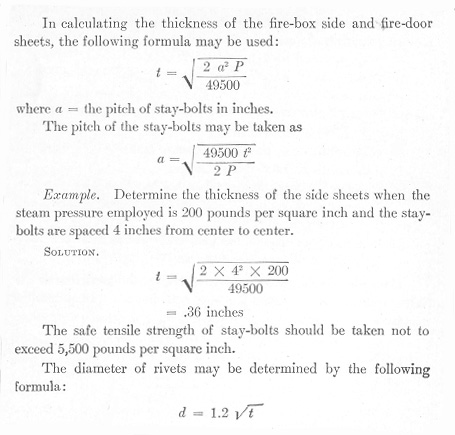

In designing the riveted joints, their strength must be considered from several different standpoints. It must be sufficiently strong to withstand the tensional stress on the metal contained in the plate between the rivets. The plates must be of such thickness as will safely carry the compressional stresses behind the rivets and the rivets must be placed in rows sufficiently far apart and far enough from the edge of the plate to insure against shearing or tearing out of the metal. In the formulae for the design of a riveted joint, the following notation will be used:
d = diameter of rivet hole in inches
p = pitch or distance in inches between center to center of rivets
t = thickness of plate in inches
h = distance in inches from edge of plate to center of first rivet hole
T = tensile strength of plate in pounds per square inch, usually taken as 55,000
S = shearing strength of rivets in pounds per square inch, usually taken as 55,000
R = shearing strength of plate in pounds per square inch, usually taken as 45,000 ponds per square inch
C = crushing strength of plate in pounds per square inch, usually taken as 50,000 pounds per square inch
f = factor of safety usually taken not less than 4-1/2

 Back to the FAQ Page
Back to the FAQ Page
